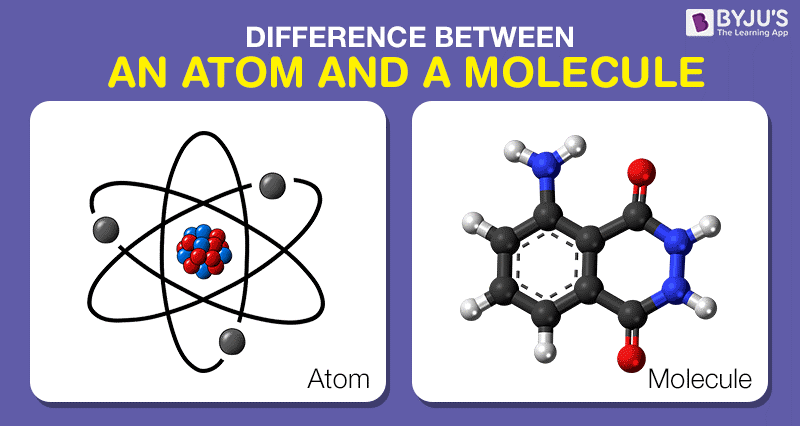The distinction between atoms and molecules constitutes a fundamental principle of chemistry and material science, impacting our comprehension of the natural world. Understanding these basic units of matter is pivotal for students and professionals across various scientific disciplines. This discussion elucidates the intrinsic variances between atoms and molecules, together with their importance, classification, and examples, thereby providing a detailed framework for appreciating the interplay between these entities.
1. Defining Atoms
An atom represents the most basic unit of an element, retaining the characteristic properties of that element. Atoms are composed of subatomic particles — protons, neutrons, and electrons. The arrangement and number of these particles delineate the atomic structure, leading to the specification of atomic number and mass number, which further inform the periodic table placement.
Atoms can be classified into two primary categories: elements and isotopes. Elements are defined by their unique number of protons, while isotopes are variants of elements that possess the same number of protons but differ in neutron count. This variance in neutron quantity results in different atomic masses and can influence stability and radioactivity.
2. Understanding Molecules
Molecules are clusters of two or more atoms that are chemically bonded together. These bonds may be covalent, ionic, or metallic in nature, dictating the molecule’s chemical behavior and physical properties. Molecules can range in complexity from simple diatomic structures, such as molecular hydrogen (H2), to colossal macromolecules, such as DNA and proteins.
Molecules can be classified into two major categories: homonuclear and heteronuclear molecules. Homonuclear molecules consist of identical atoms, as seen in O2 or N2, whereas heteronuclear molecules are formed from different types of atoms, exemplified by water (H2O) and carbon dioxide (CO2). This classification is critical in understanding chemical reactions and molecular interactions.
3. Atomic Vs. Molecular Structure
The structural differences between atoms and molecules are profound. Atoms, being singular entities, manifest characteristics such as size, mass, and charge but encapsulate no further division unless split through nuclear reactions. Conversely, molecules exhibit complex geometric structures resulting from the interplay of electron clouds surrounding the constituent atoms, influencing bond angles and spatial arrangements. This geometry plays a critical role in determining the functionality and reactivity of the resulting compound.
4. Chemical Bonding
The nature of bonding delineates a crucial differentiating factor between atoms and molecules. Within atoms, bonds are predominant among the subatomic particles – protons and neutrons create a nucleus, while electrons occupy defined energy levels around the nucleus. In contrast, molecular formations arise primarily from the linkage of atoms, which can be represented through Lewis structures and molecular orbital theories.
Among the types of chemical bonds, covalent bonds involve the sharing of electrons between atoms, leading to the formation of more stable configurations. Ionic bonds, formed through the transfer of electrons, induce electrostatic attractions between positively and negatively charged ions, while metallic bonds involve a collective sharing of electrons across a lattice of metal atoms. Understanding these bonds is essential for grasping the mechanisms underpinning molecular interactions.
5. Physical Properties and Behavior
The physical properties inherent in atoms and molecules differ significantly. Atoms typically exist in gaseous states under standard conditions, exhibiting behaviors dictated by fundamental forces. Their size, however, limits their interactions with each other. Molecules, by contrast, can manifest as solids, liquids, or gases, which is validated by the diverse physical states of compounds such as ice, water, and steam. These macroscopic differences arise from intermolecular forces, including van der Waals forces, hydrogen bonds, and dipole-dipole interactions.
Additionally, molecules exhibit unique properties, such as boiling and melting points, solubility, and reactivity, driven largely by their structured formations. Understanding these properties is essential for applications in fields ranging from chemistry to materials science.
6. Implications in Science and Technology
The exploration of atomic and molecular distinctions is not merely academic but has practical ramifications across various scientific fields. In chemistry, this knowledge is pivotal for synthesizing new compounds, facilitating reactions, and predicting outcomes in analytical and organic chemistry. In physics, atomic theory underpins the principles of thermodynamics and quantum mechanics, shaping technology at the macro and micro levels.
Further, advancements in nanotechnology leverage the principles of atomism and molecular interactions to create novel materials with unprecedented properties. The field of biochemistry relies heavily on molecular understanding in the development of pharmaceuticals and biotechnological innovations, ultimately affecting healthcare and medical therapies.
Conclusion
In summary, the differential characteristics between atoms and molecules encapsulate fundamental principles of chemistry that govern the physical world. Atoms serve as the building blocks of matter, while molecules symbolize the interactions that arise from these components’ chemical bonding. An adept comprehension of their distinctive properties and classifications not only enriches academic discourse but also propels advancements across scientific paradigms. Such knowledge fosters an appreciation for the intricacies of matter and the shared universe in which we reside.












